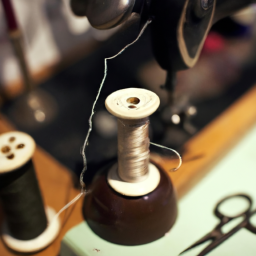
History of Dressmaking or Tailoring

Origins of Dressmaking
Dressmaking, also known as the art of sewing and crafting garments, has a rich history dating back centuries. The practice of creating clothing evolved from a necessity for human survival to an art form influenced by cultural, social, and economic factors.
Ancient Civilizations and Early Techniques
The origins of dressmaking can be traced back to ancient civilizations like Egypt, Mesopotamia, and China, where people manually sewed fabrics together using basic tools such as bone needles and animal sinew threads. The garments made during these times were mainly draped or wrapped around the body.
Medieval and Renaissance Influences
During the Middle Ages and Renaissance, dressmaking techniques became more refined. Tailors emerged as skilled artisans, incorporating intricate embroidery, beading, and lacework into their designs. The clothing reflected social status and was often customized for individual wearers, including royalty and nobility.
The Industrial Revolution and Modern Tailoring
The Industrial Revolution during the late 18th and early 19th centuries marked a significant shift in the dressmaking industry. The invention of the sewing machine revolutionized the production process, allowing for mass production of garments. Tailoring became more accessible to the middle and working classes, as ready-to-wear clothing became more readily available.
Contemporary Dressmaking
In the present day, dressmaking remains an important skill. While many opt for ready-to-wear clothing from retail stores, there is still a demand for custom-tailored garments, particularly for special occasions and unique fashion statements. The advent of new technologies like computerized pattern drafting and 3D printing has further revolutionized the dressmaking industry.
The Future of Dressmaking
The future of dressmaking looks promising, with a renewed interest in sustainable and ethical fashion practices. Designers and tailors are exploring eco-friendly fabrics, upcycling techniques, and slow fashion movements to reduce waste and promote conscious consumerism. Dressmaking, as a traditional craft, continues to evolve and adapt to the changing needs and desires of our society.

Whether it’s the ancient artistry of handmade garments or the mass production of clothing, the history of dressmaking or tailoring provides a fascinating glimpse into the evolution of human culture, fashion, and craftsmanship.




